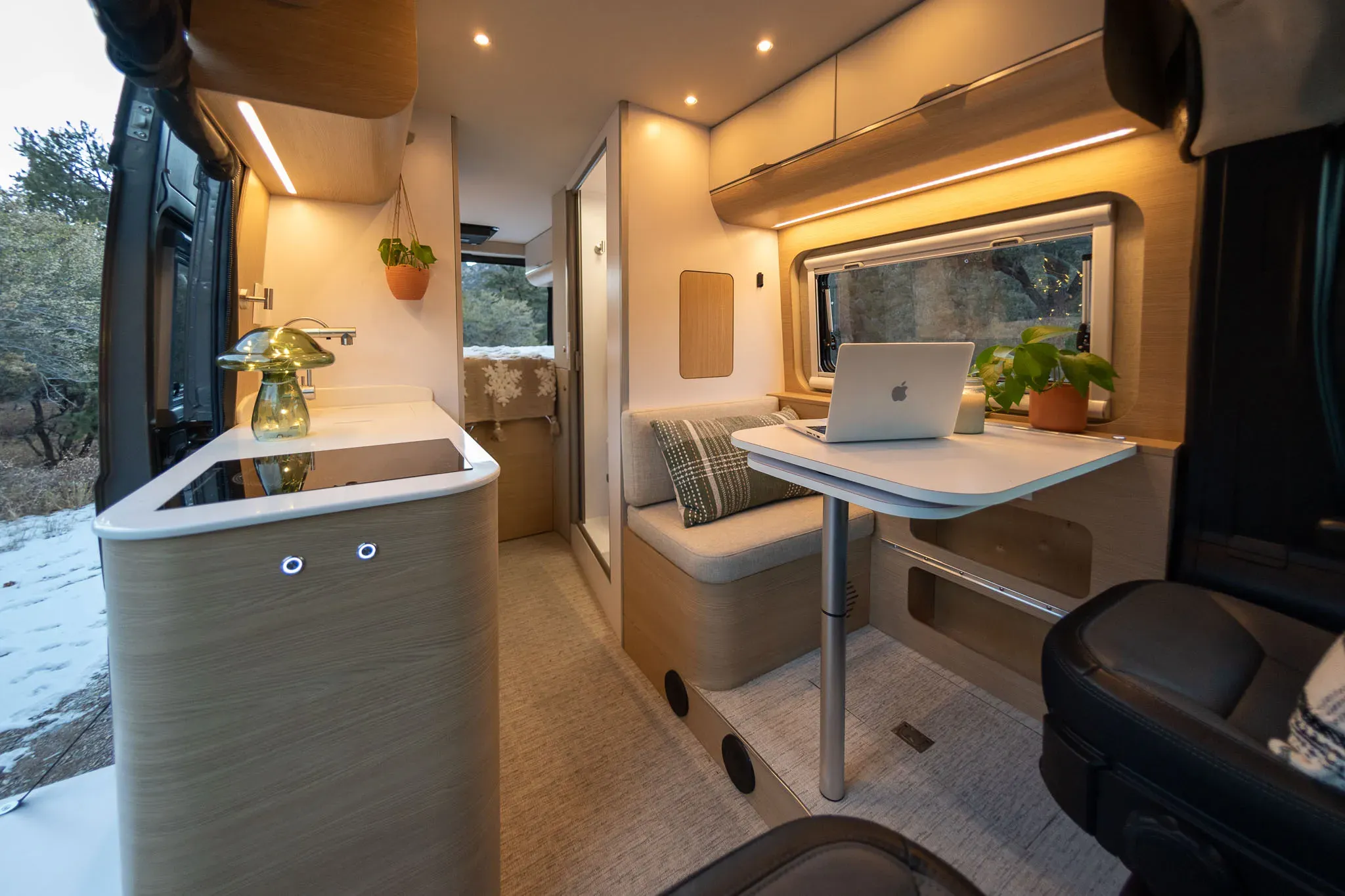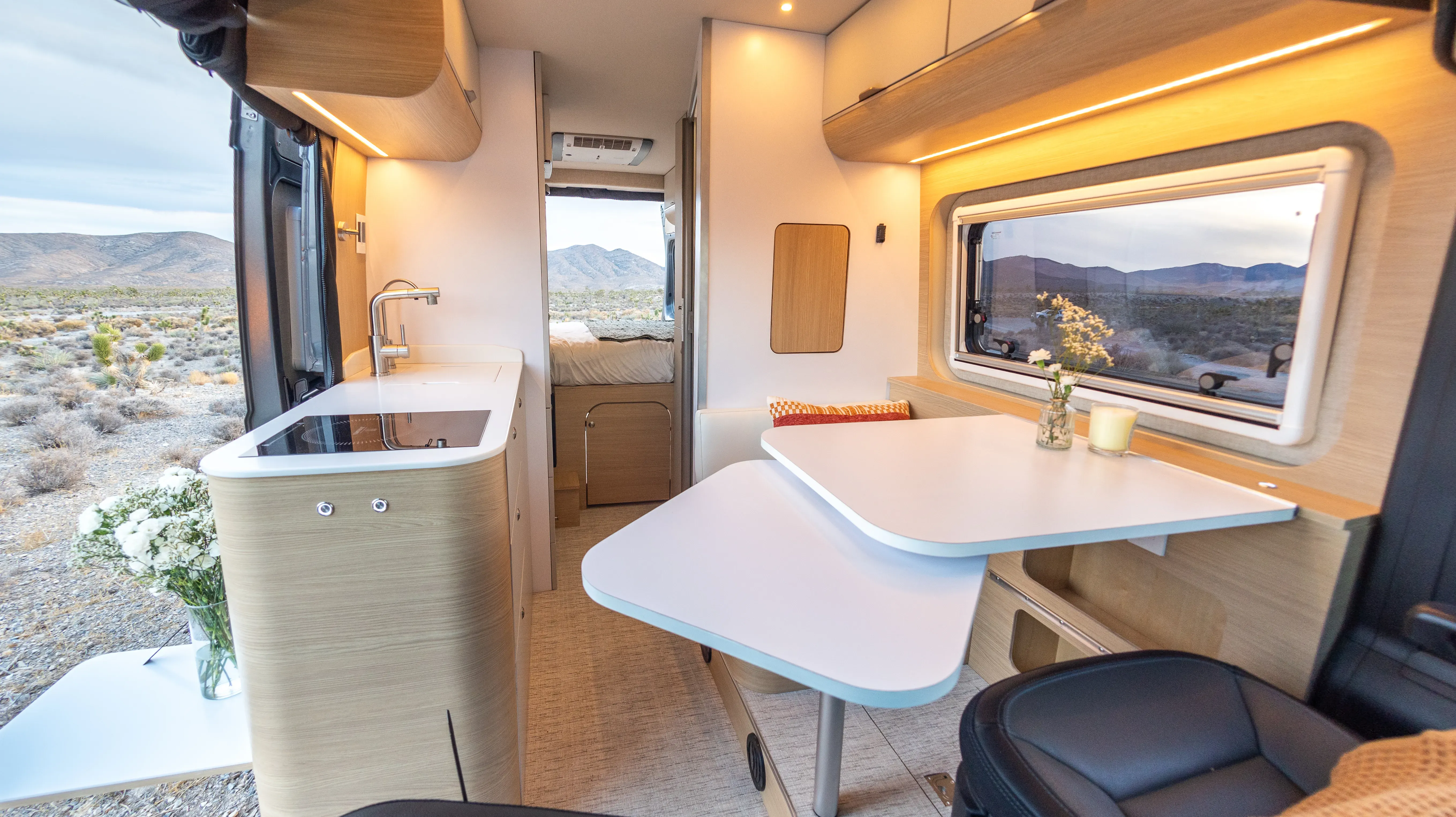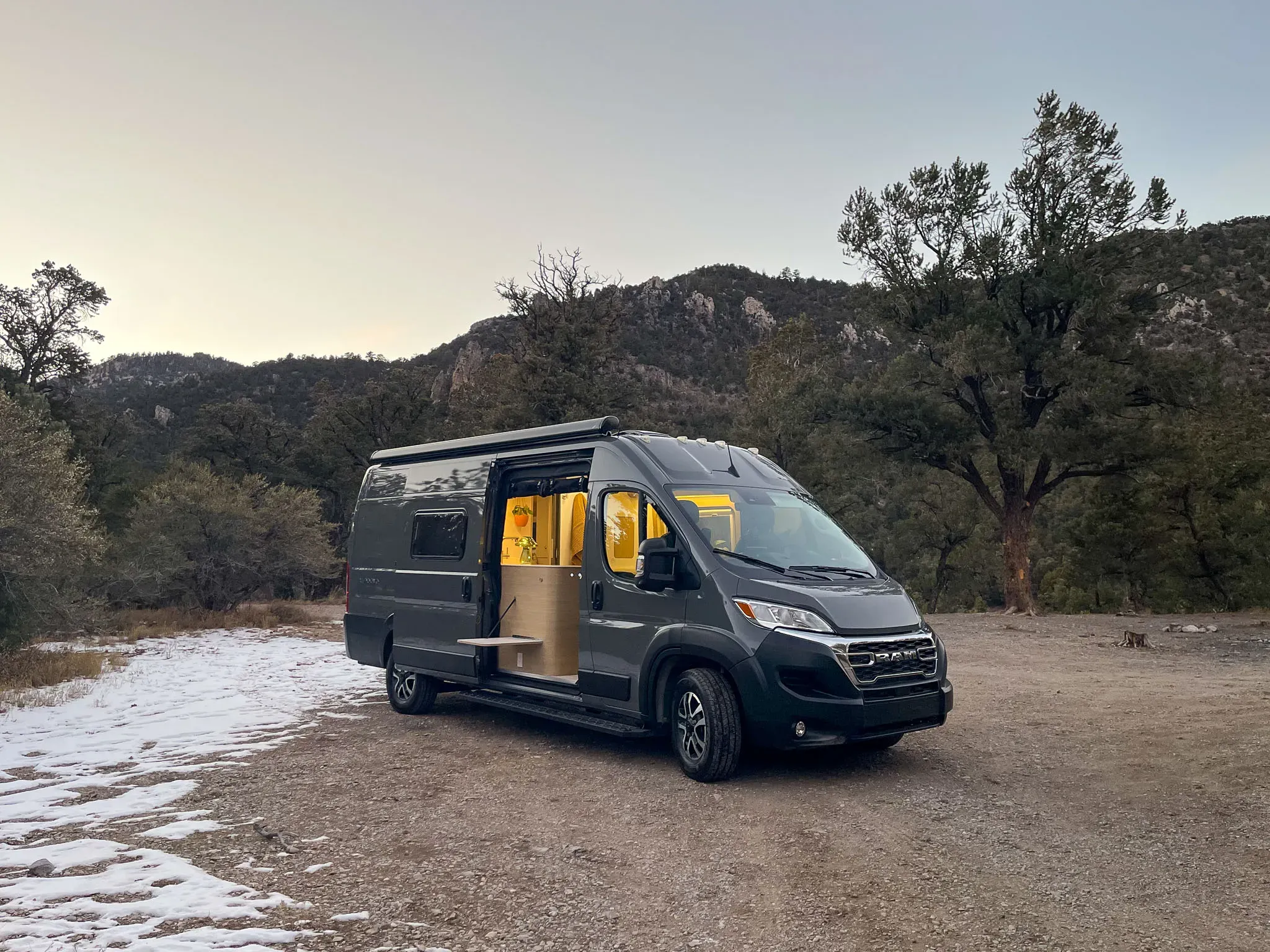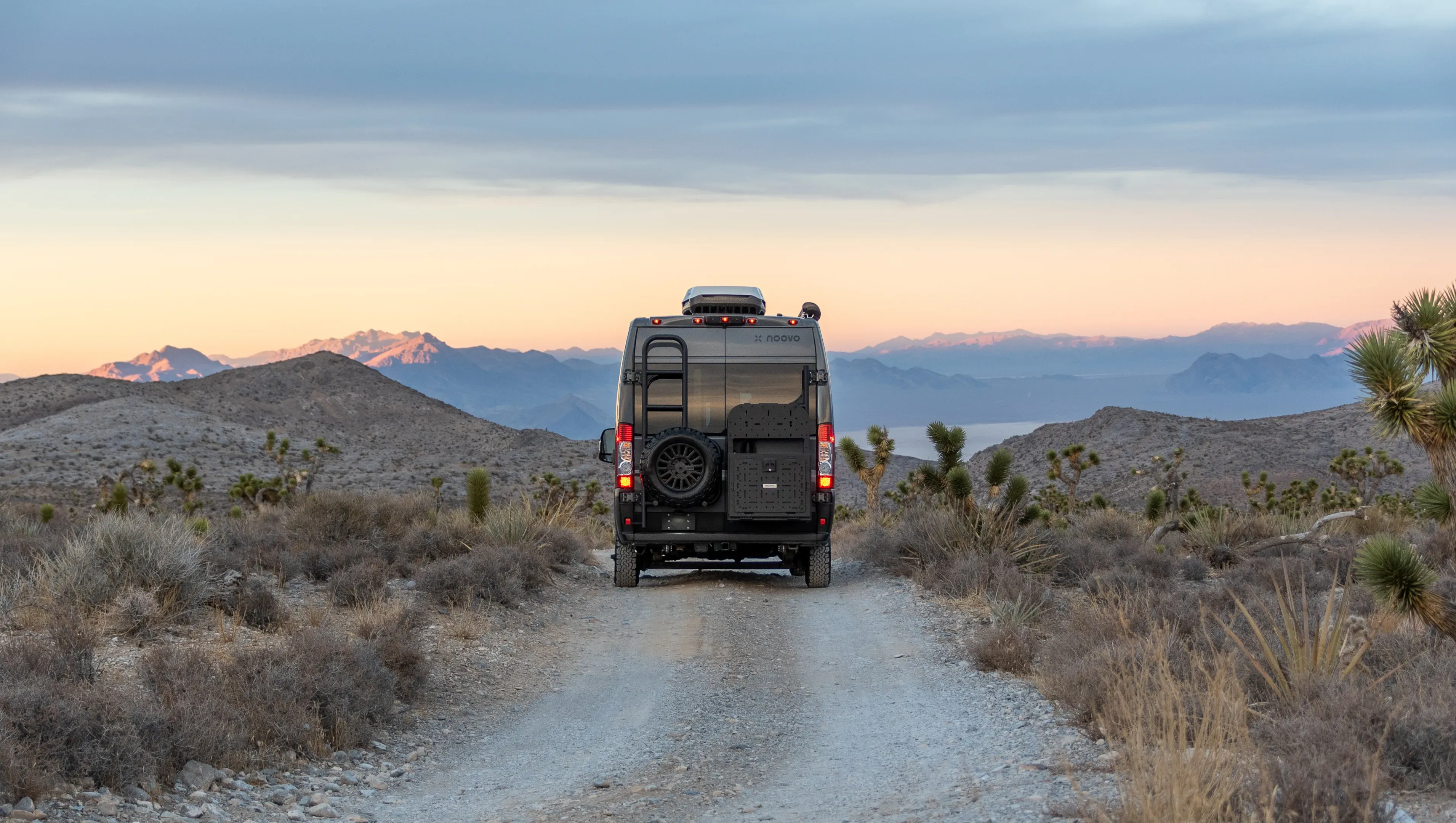📞 Schedule your online consultation here
Mercedes Sprinter vs Ford Transit
Camper Van Chassis Comparison
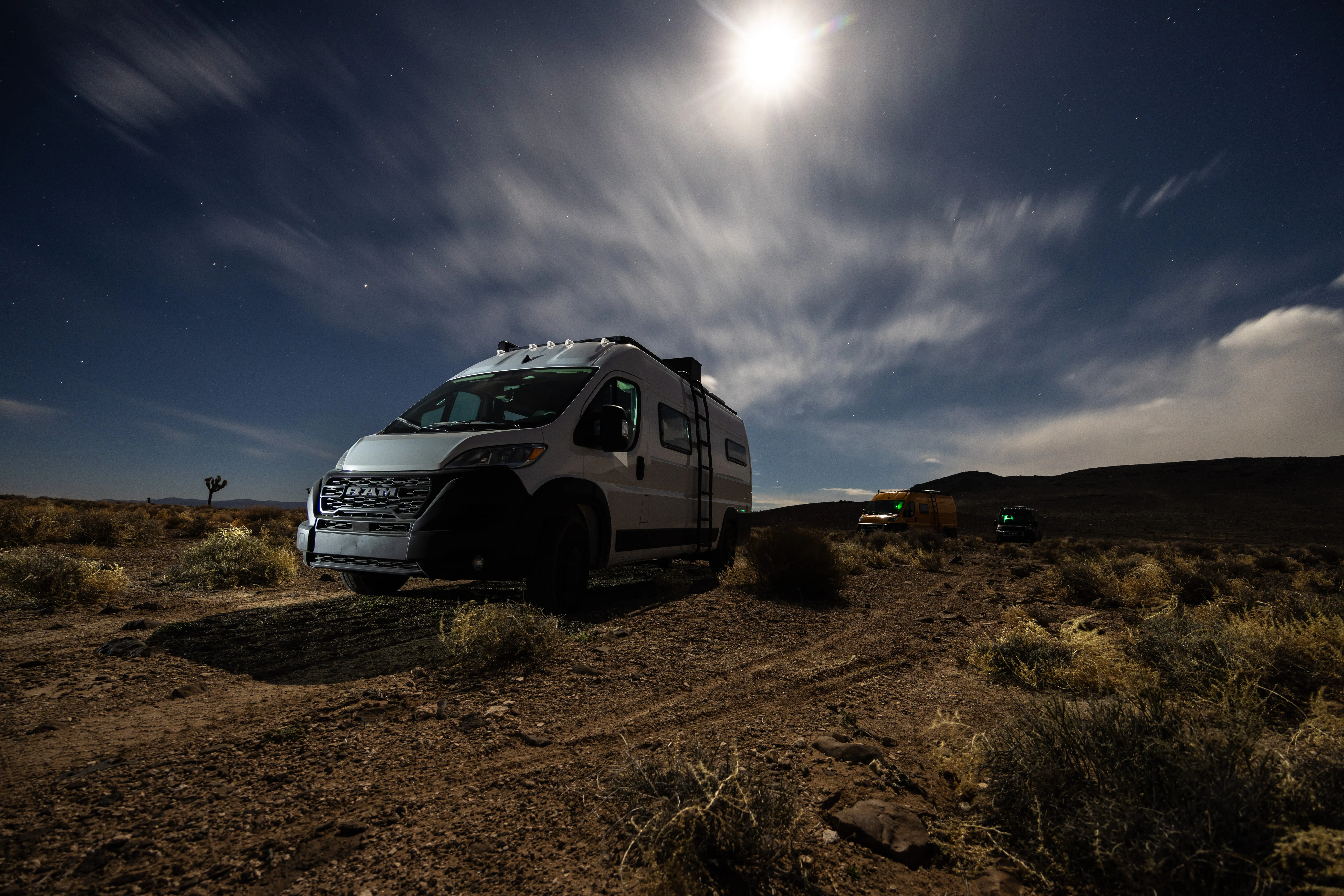
The Mercedes Sprinter and Ford Transit chassis are both excellent choices for camper van conversions, each with its own strengths.
The most notable difference is the Sprinter's available 4x4 option, which the Transit lacks. However, 4x4 is often overrated for long-term van living, primarily benefiting backcountry adventure enthusiasts.
When evaluating chassis, factors like interior space, fuel efficiency, and maintenance costs play a more crucial role in daily life. The Transit offers a more conversion-friendly interior and lower initial costs, while the Sprinter boasts superior build quality and potentially better resale value.
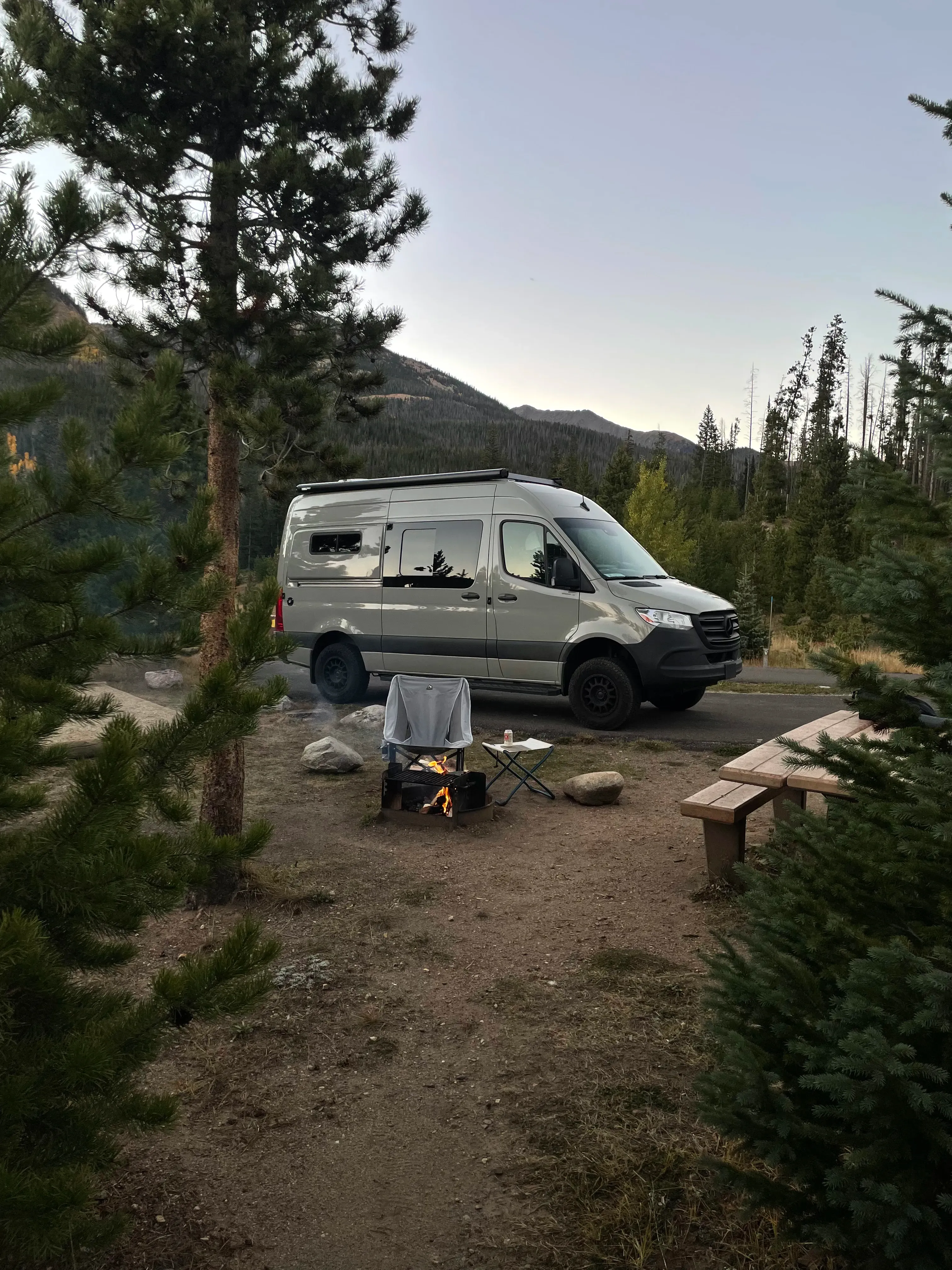
A Mercedes Sprinter
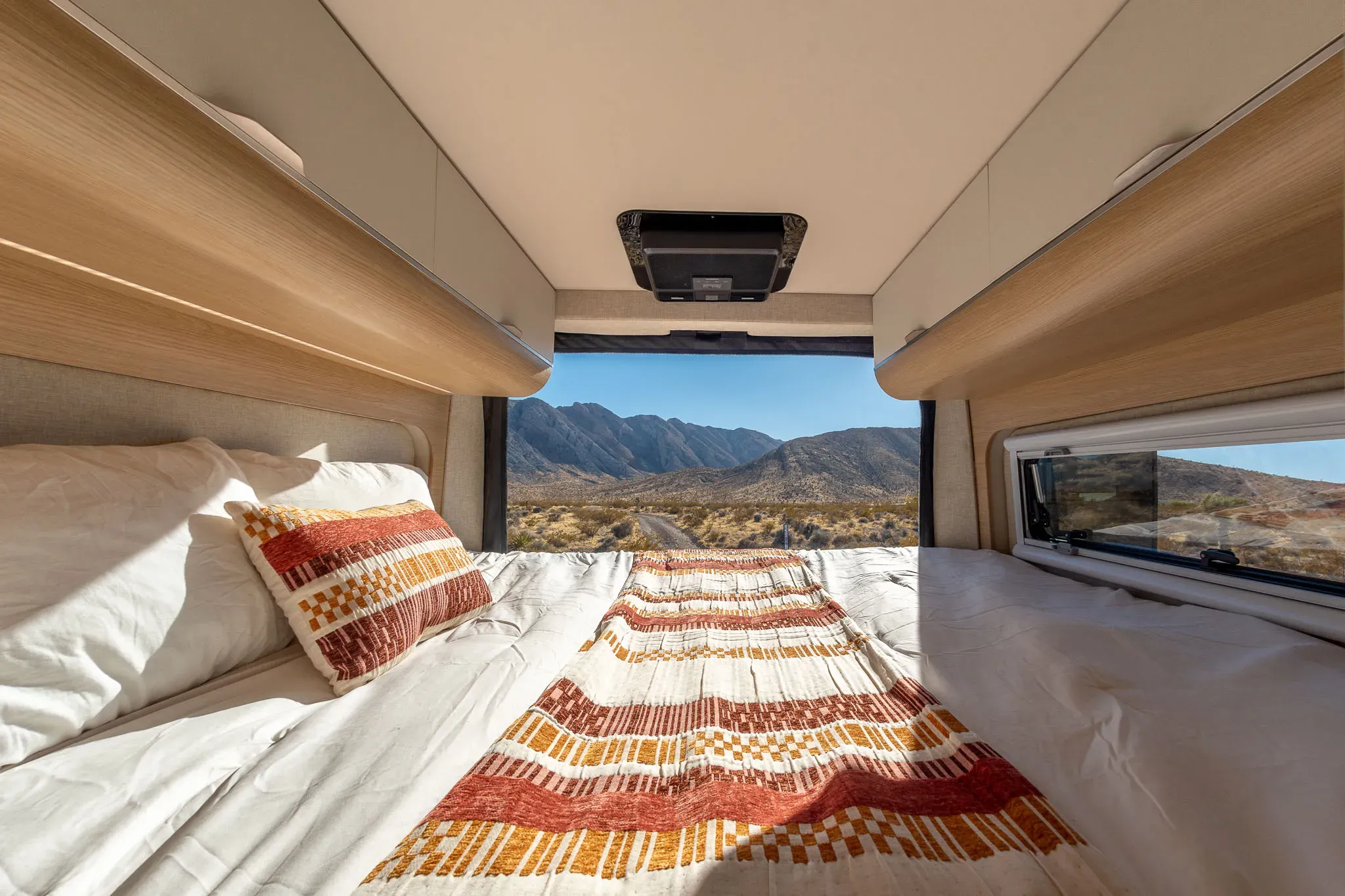
Our comfy bed!
Mercedes Sprinter vs Ford Transit
Chassis Features
Features | Mercedes Sprinter | Ford Transit |
|---|---|---|
Drive Configuration | Available 4x4 | Rear-wheel drive (AWD available in newer models) |
Interior Shape | Slightly tapered walls | Straighter walls, more conversion-friendly |
Cost | Higher initial cost | More affordable |
Serviceability | Limited service centers | Widespread, easier maintenance |
Fuel Options | Diesel and gasoline | Gasoline (diesel in some markets) |
The most significant difference between the Sprinter and Transit is their off-road capability.
The Sprinter's available 4x4 option makes it superior for rugged terrain, while the Transit's rear-wheel drive (with AWD in newer models) is better suited for light off-road use and paved roads.
Interior design also differs notably. The Transit's straighter walls are more conversion-friendly, allowing for easier installation of cabinets and fixtures. The Sprinter's slightly tapered walls can complicate conversions but may offer aerodynamic benefits.
Cost and maintenance present another key distinction. The Transit is typically less expensive than the Sprinter, with lower ongoing maintenance costs due to more widespread service availability. The Sprinter's higher price tag comes with premium build quality but also higher maintenance expenses and potentially longer waits for service in remote areas.
At Noovo, we've found that most full-time van lifers prioritize livability and ease of maintenance over extreme off-road capability. That's why our designs focus on maximizing interior space and ensuring long-term reliability, regardless of the chassis chosen.
Sprinter vs Transit Detailed
Spec Sheet
Features | Mercedes Sprinter | Ford Transit |
|---|---|---|
Chassis | Mercedes-Benz Sprinter 3500 | Ford Transit 350 |
Engine | 3.0L V6 diesel or 2.0L I4 gasoline | 3.5L V6 gasoline or 2.0L I4 diesel (market dependent) |
Drivetrain | Rear-wheel drive or 4x4 | Rear-wheel drive or AWD (newer models) |
Exterior Dimensions | Length: 19.5-24 ft, Width: 7.1 ft, Height: 8.4-9.5 ft | Length: 19.6-22.4 ft, Width: 6.8 ft, Height: 8.2-9.5 ft |
Interior Height | Up to 6.8 ft | Up to 6.7 ft |
Cargo Space | Up to 533 cu ft | Up to 487 cu ft |
Payload Capacity | Up to 6,735 lbs | Up to 5,110 lbs |
Towing Capacity | Up to 7,500 lbs | Up to 6,800 lbs |
Fuel Efficiency | 14-19 mpg combined | 15-20 mpg combined |
Starting Price | Around $45,000 | Around $38,000 |
Warranty | 3-year/36,000-mile basic, 5-year/100,000-mile diesel engine | 3-year/36,000-mile basic, 5-year/60,000-mile powertrain |
The Mercedes Sprinter and Ford Transit offer distinct advantages in their specifications. The Sprinter, with its 4x4 option and higher ground clearance, is optimized for more challenging terrains. It offers impressive cargo space and payload capacity, making it suitable for extensive builds and heavier loads.
The Transit, while lacking a true 4x4 option, offers AWD in newer models, which is sufficient for most van life adventures. It provides comparable interior space and often better fuel efficiency, especially with its gasoline engine options. The Transit's lower starting price and more widespread serviceability make it an attractive option for budget-conscious van lifers.
Both vans offer similar warranties, but the Sprinter's diesel engine warranty extends to 100,000 miles. In terms of safety, both can be equipped with modern driver assistance technologies, though specific features may vary between models and trim levels.
At Noovo, we've found that the choice between these chassis often comes down to individual travel plans and budgets. For those planning extensive backcountry adventures, the Sprinter's 4x4 capability can be a game-changer. However, for most van lifers, the Transit's balance of affordability, space, and serviceability aligns well with long-term living needs.
Pricing & Value
Comparison
Pricing Components | Mercedes Sprinter | Ford Transit |
|---|---|---|
Base Price | Starting around $45,000 | Starting around $38,000 |
Conversion Cost | $50,000 - $150,000 | $40,000 - $120,000 |
Financing Options | Available through Mercedes-Benz Financial, various terms | Available through Ford Credit, flexible terms |
Estimated Monthly Payment | Typically $1,000 - $2,500 | Typically $800 - $2,000 |
Additional Costs | Upgrades, higher maintenance, diesel fuel (if applicable) | pgrades, maintenance, fuel |
Total Cost Over 5 Years | Estimated $120,000 - $250,000 | Estimated $100,000 - $200,000 |
Resale Value | Very Good | Good |
The Ford Transit offers a more budget-friendly entry point, with base models starting around $38,000 compared to the Sprinter's $45,000 starting price. This initial price difference can be significant when considering conversion costs. Transit conversions typically range from $40,000 to $120,000, while Sprinter conversions can run from $50,000 to $150,000 or more for luxury builds.
Financing options are available for both vehicles, with monthly payments for a converted Transit generally falling between $800 and $2,000, while a Sprinter might range from $1,000 to $2,500 or higher. Over a five-year period, the total cost of ownership for a Transit-based camper van is estimated at $100,000 to $200,000, whereas a Sprinter-based van could cost between $120,000 and $250,000.
It's important to note that Sprinters tend to have higher maintenance costs, especially for diesel models. However, they also typically retain their value better, which can offset some of the higher upfront and ongoing costs if you plan to sell in the future. The Transit, while having a slightly lower resale value, offers significant savings over time, making it an attractive option for budget-conscious van lifers.
At Noovo, we've observed that the initial cost savings of the Transit often allow for more comprehensive interior builds, which can significantly enhance the van life experience. However, for those prioritizing long-term value retention, the Sprinter's higher resale value can be a compelling factor.

The kitchen of our Noovo Plus
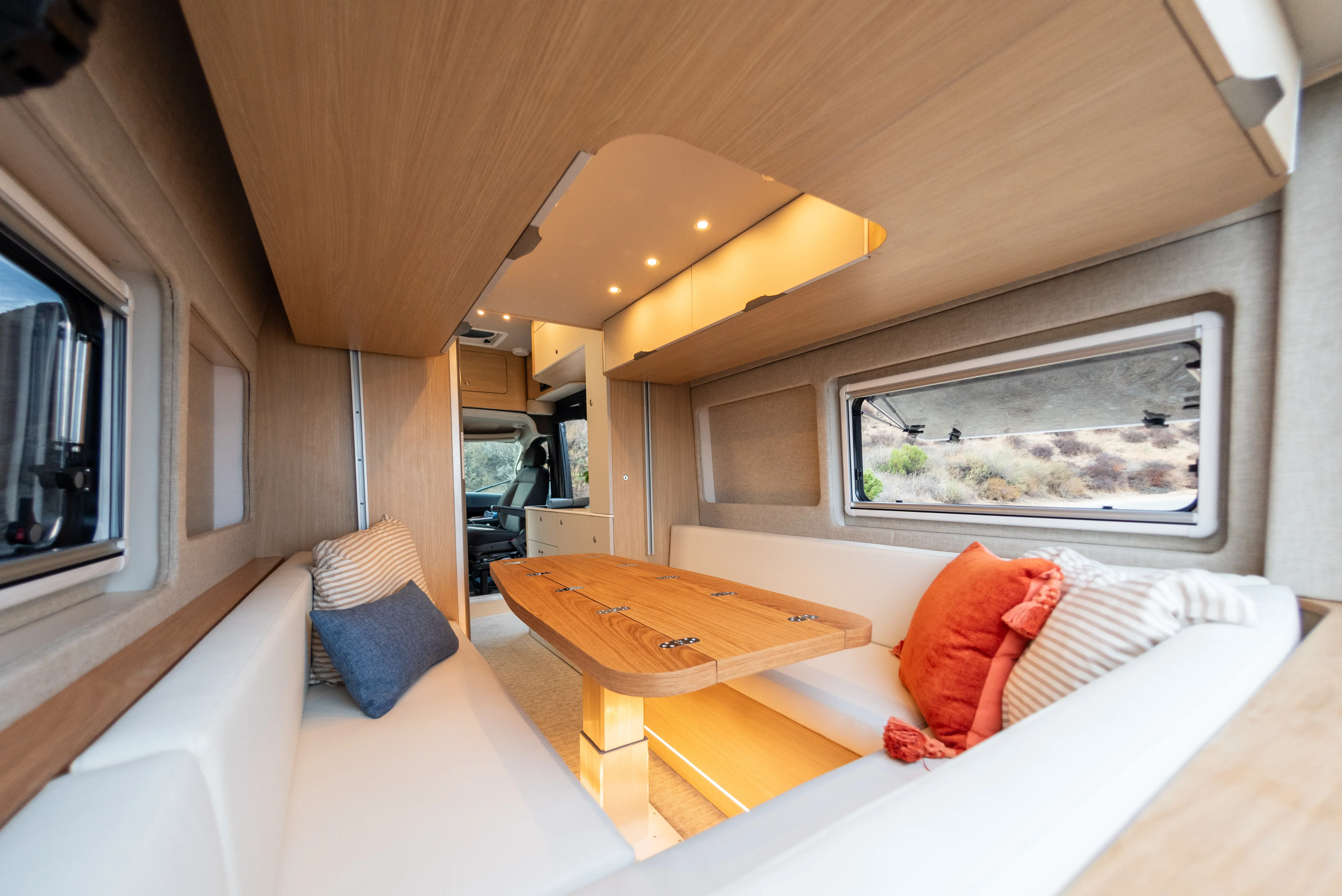
The living room of our Noovo Plus
Mercedes Sprinter
Pros:
- Available 4x4 option for superior off-road capability
- Premium build quality and brand reputation
- Higher payload and towing capacity
- Excellent resale value
- Diesel engine option for improved fuel efficiency on long trips
Cons:
- Higher initial cost and more expensive maintenance
- Limited service centers, especially in remote areas
- Slightly tapered walls can complicate conversions
- Higher fuel costs for diesel models in some regions
Ford Transit
Pros:
- More affordable initial cost and lower maintenance expenses
- Widespread availability of parts and service centers
- Straighter walls for easier conversions and maximized interior space
- Available AWD in newer models suitable for most van life needs
- Generally better fuel efficiency with gasoline engines
Cons:
- Lack of true 4x4 option for extreme off-road use
- Slightly lower payload and towing capacity
- Lower resale value compared to the Sprinter
- Limited diesel engine options in some markets
Frequently Asked Questions
Want to read more ?
Discover similar content with these recommended articles.

